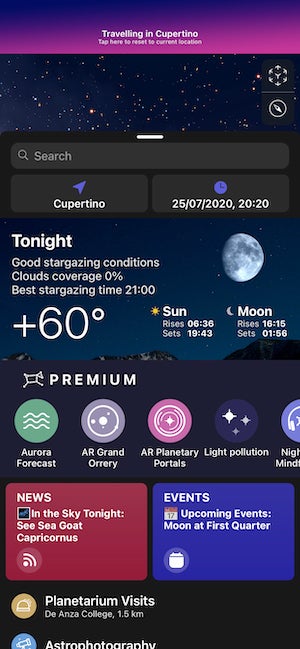
Stargazing used to mean staring at the sky and consulting a guidebook to decipher the stars, or acquiring an expensive telescope to see them more clearly. Now, dozens of stargazing smartphone apps make it easy for anyone to enjoy and learn about the cosmos. Generally, they entail holding your smartphone up to the sky, and visuals on your screen will reflect the section of the sky it’s pointing at. If you’re looking to improve your knowledge of the cosmos, identify constellations on a camping trip, or plan for future astronomical events, these apps will help you know where (and when) to look up.
Night Sky

The free version of this Apple-compatible app offers many features, and all are accessible with Night Sky + for $5.99 a month. Along with a 1.7 billion star library, Night Sky has a real-time map of the sky overlaid with constellations that update whenever you move your device. If the view is overwhelming, choose what objects you want to see (or remove) on the side menu. The app features Augmented Reality (AR) functions, overlaying a surface with the solar system so you can watch the stars swirl at the speed of your choosing. Explore the planets, constellations, and nebulas in 3D, or zoom in on spacecraft like Sputnik 1 and The Space Shuttle. If you’re on the lookout for a specific object moving ahead — like the International Space Station — set notifications to let you know when to look up. Night Sky is great for city users and includes a filter that adjusts for light pollution so you can see celestial objects you might not otherwise be able to discern.
SkyView
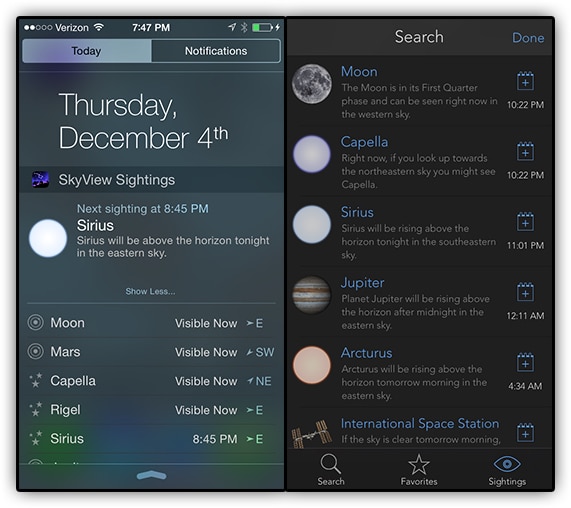
Identify galaxies, constellations, and stars, or man-made objects like satellites, the ISS, and Hubble as they pass overhead using SkyView. Using Augmented Reality, the app overlays the night sky with notes to teach you about each object above, including its history and related mythology (and you can jump right to its Wiki page to read more). Jump around in time to see what the sky looked like at different points in the past, or what it will look like in the future.
Because the app doesn’t require cell phone service to use, it’s great for campers. It also features a version for Apple Watch, a widget for your home screen that lets you know what objects are visible above, and push reminders for celestial events. For experienced stargazers, the app also supports Space Navigator binoculars, spotting scope, and telescopes.
SkyView (the enhanced version of the app) is $1.99 a month, but SkyView Lite is free.
SkySafari 7
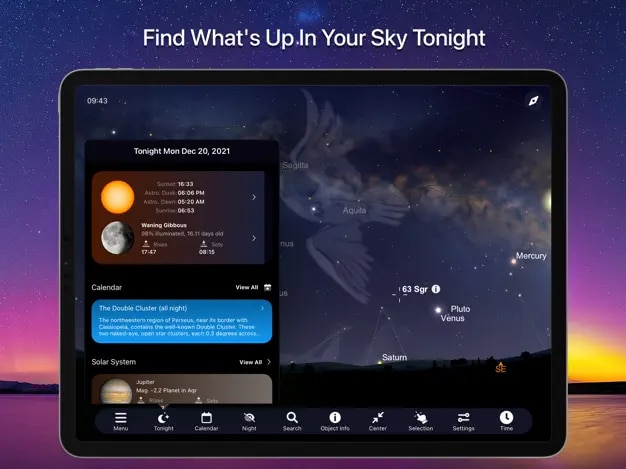
Three different SkySafari apps are available at different prices — SkySafari Basic at $4.99, SkySafari 7 Plus at $9.99, and SkySafari 7 Pro at $39.99 — but all offer Tonight at a Glance: a guided summary of what’s happening in the sky tonight that’s beloved by its users. Point your phone at the sky to locate planets and other objects through a visual blend of the real view with a simulated sky chart. Using Orbit Mode, leave Earth and travel to other planets, moons, and stars to view from there. Try the Events Finder to see what future lunar and solar eclipses (or other astronomical events) will look like from where you’re standing. The app also features audio tours about the science, mythology, and history of the stars, as well as pronunciation guides for those hard-to-say celestial terms. Although it’s still compatible with iOS, SkySafari is considered especially good for Androids and for connecting with telescopes.
Stellarium Mobile
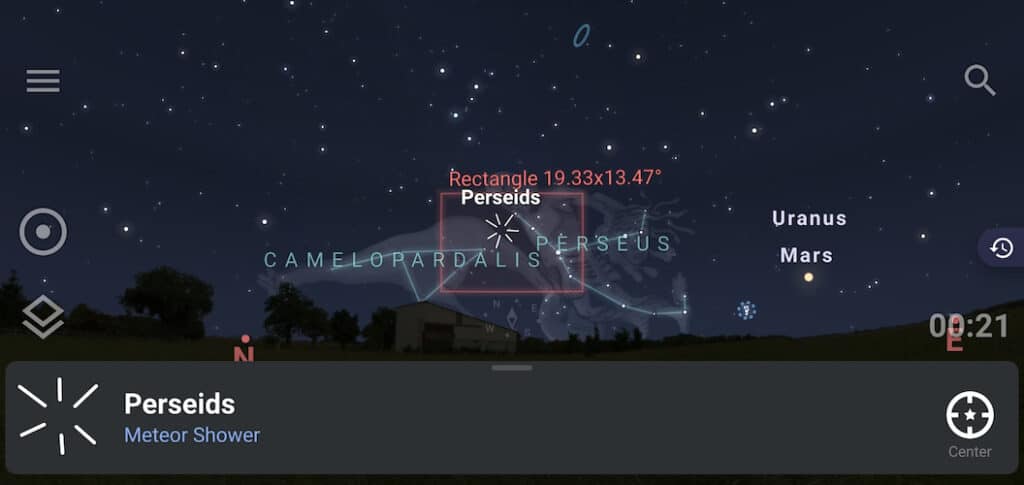
From Stellarium — the open-source planetarium with a well-known desktop app — comes Stellarium Mobile: a free app that offers a premium version for $13.99. Its simple design makes the app easy to use, and features a search function to find all known stars, planets, comets, and deep sky objects, as well as satellites and asteroids. The night mode option (which tints your screen red) helps you view the stars without interfering with your night vision. Stellarium Mobile is very well-rated by users, and is lauded for its star library, which contains more stars than any other app on the market. Among other features, the plus version allows you to see a 3D view of objects, explore a calendar of upcoming events, and includes a telescope control module.
Star Walk 2
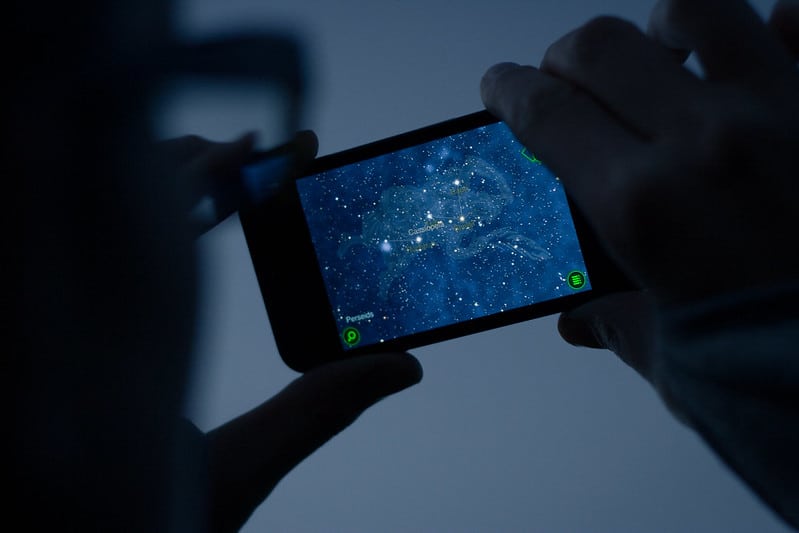
Named best astronomy app, Star Walk 2 is considered a great option for beginners, as it’s meant to be viewed on a phone screen rather than a telescope. The premium version of the app costs $2.99 a month, but if you aren’t bothered by ads, the free version (Star Walk 2 Ads +) offers many of the same components. Featuring real-time, interactive maps of the sky, explore satellites, star clusters, nebulae, galaxies, asteroids, comets, and meteors to a soundtrack of ethereal music. Its “encyclopedia of the sky” also provides extensive information, photos, and 3D models of objects, and the app lets you know the best times for observing the objects that are visible from your location. Read astronomical news about stargazing forecasts, current astronomy events, tips for observing events like meteor showers and eclipses, and what celestial bodies are currently visible. Star Walk Kids is also available for both iOS and Android.
Sky Guide
Featuring 1.7 billion stars and 1 million deep-sky objects, Sky Guide is a favorite for identifying constellations, planets, and satellites above. The app doesn’t need Wi-Fi, cellular service, or GPS to function, making it the perfect option for backcountry campers. Users love the vibrant colors and simple display of the uncluttered, informative app that you can customize to your interests. Toggle on displays of aurora borealis and aurora australis, constellation lines, and overlays of Western/Ancient Greek mythological constellation art. Keep up-to-date with forecasts for meteor showers and other events, and use cinematic time controls to gaze at past and future skies. The app itself is free, with two upgrades available as in-app purchases: Sky Guide Plus or Sky Guide Pro, although you can check out a free one-week trial of both before you make a decision. Unfortunately, the app is not available for Android users.
The post The Best Apps for Stargazing appeared first on EcoWatch.
